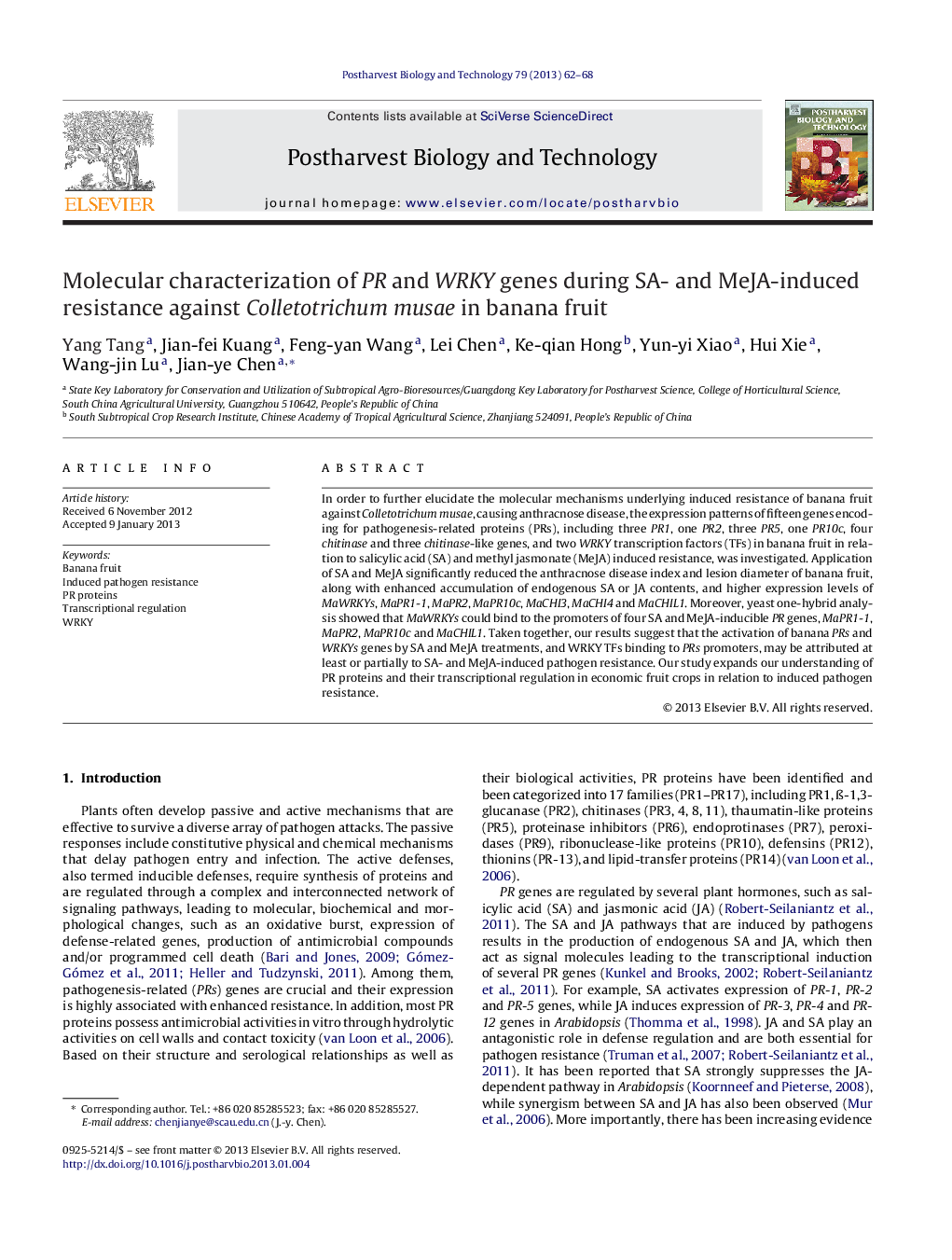| Article ID | Journal | Published Year | Pages | File Type |
|---|---|---|---|---|
| 4518531 | Postharvest Biology and Technology | 2013 | 7 Pages |
In order to further elucidate the molecular mechanisms underlying induced resistance of banana fruit against Colletotrichum musae, causing anthracnose disease, the expression patterns of fifteen genes encoding for pathogenesis-related proteins (PRs), including three PR1, one PR2, three PR5, one PR10c, four chitinase and three chitinase-like genes, and two WRKY transcription factors (TFs) in banana fruit in relation to salicylic acid (SA) and methyl jasmonate (MeJA) induced resistance, was investigated. Application of SA and MeJA significantly reduced the anthracnose disease index and lesion diameter of banana fruit, along with enhanced accumulation of endogenous SA or JA contents, and higher expression levels of MaWRKYs, MaPR1-1, MaPR2, MaPR10c, MaCHI3, MaCHI4 and MaCHIL1. Moreover, yeast one-hybrid analysis showed that MaWRKYs could bind to the promoters of four SA and MeJA-inducible PR genes, MaPR1-1, MaPR2, MaPR10c and MaCHIL1. Taken together, our results suggest that the activation of banana PRs and WRKYs genes by SA and MeJA treatments, and WRKY TFs binding to PRs promoters, may be attributed at least or partially to SA- and MeJA-induced pathogen resistance. Our study expands our understanding of PR proteins and their transcriptional regulation in economic fruit crops in relation to induced pathogen resistance.
► Application of SA and MeJA induced resistance of banana fruit to anthracnose disease. ► SA or MeJA treatment enhanced endogenous SA or JA accumulation, respectively. ► SA and MeJA treatment induced stronger expression of MaPR1-1, MaPR2, MaPR10c, MaCHI3, MaCHI4, MaCHIL1, and MaWRKYs. ► MaWRKY1/2 could bind to the promoters of MaPR1-1, MaPR2, MaPR10c, and MaCHIL1.
